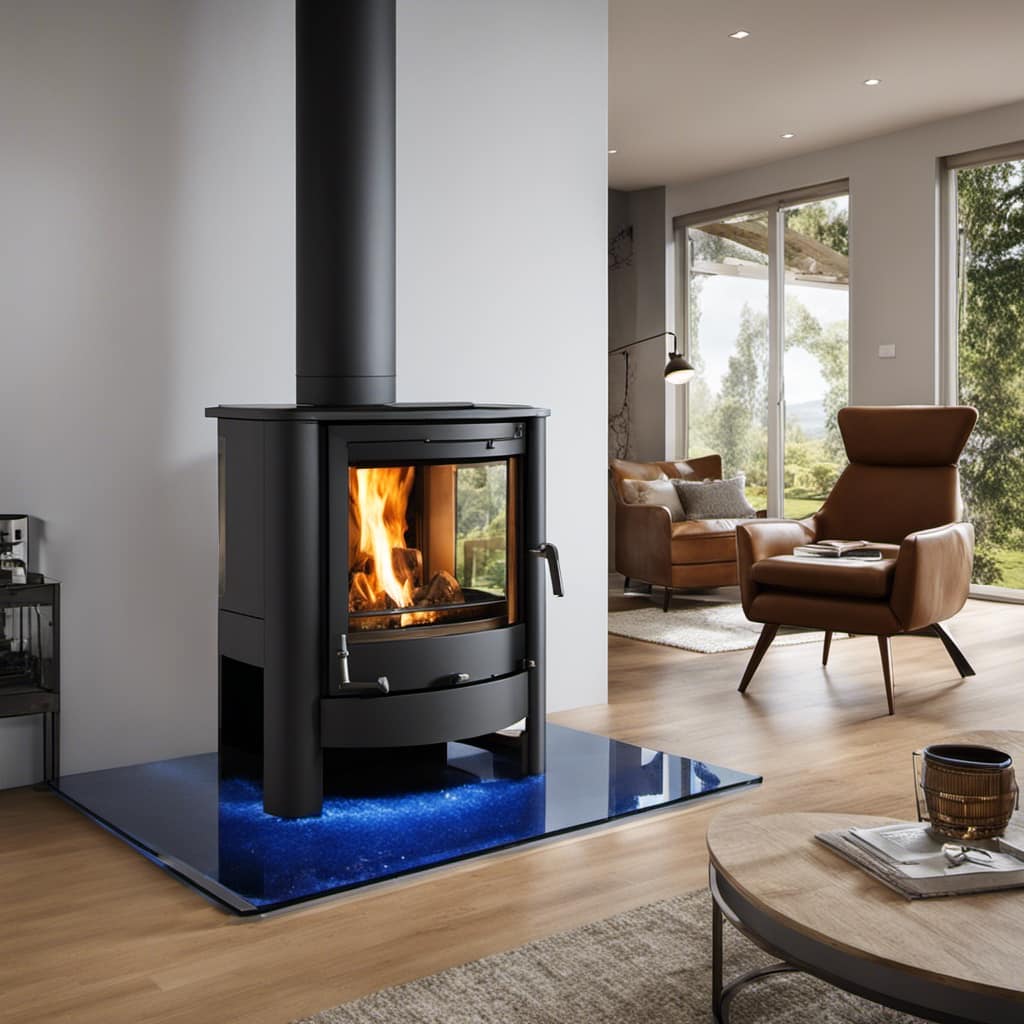
I have found the key to boosting the heat produced by my wood stove, and I am excited to pass on this information to you.
By understanding the principles of heat circulation and utilizing effective transfer methods, you can create a cozy and comfortable space.
In this article, I’ll guide you through optimizing airflow, implementing reflectors and radiators, and exploring additional techniques to distribute heat efficiently.
Get ready to experience the full potential of your wood stove and enjoy a toasty atmosphere all winter long.
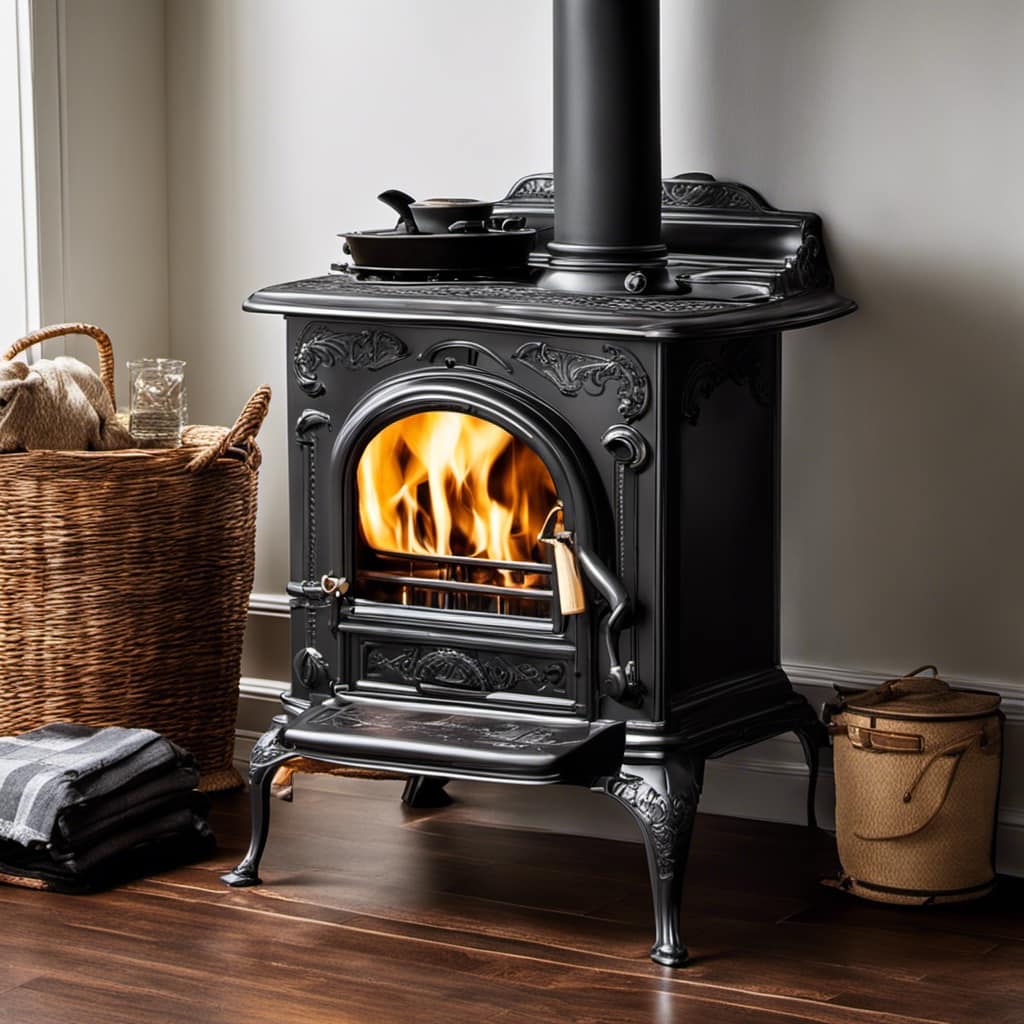
Key Takeaways
- Proper insulation is crucial for efficient heat distribution and minimizing heat loss.
- Utilizing heat transfer methods such as convection, radiation, conduction, and forced air can enhance heat distribution from a wood stove.
- Optimizing airflow in the space through natural or mechanical ventilation is important for maximizing the efficiency of the heating system.
- Implementing heat reflectors, radiators, heat sinks, and forced air systems can further improve heat distribution from a wood stove.
Understanding Heat Circulation
I can feel the heat from the wood stove spreading throughout the room.
Heat conduction in wood stoves is a crucial aspect to understand in order to effectively distribute heat. Wood stoves are designed to generate heat by burning wood, which then radiates into the surrounding area.
The process of heat conduction in wood stoves involves the transfer of thermal energy from the hot stove surface to the cooler air in the room. However, proper insulation plays a vital role in ensuring efficient heat distribution. Insulation helps to minimize heat loss by preventing the escape of warm air and ensuring that the heat is directed towards the desired areas.
Without proper insulation, heat distribution can be compromised, resulting in uneven heating and wastage of energy. Therefore, it’s essential to prioritize proper insulation to achieve optimal heat circulation in wood stove heating systems.
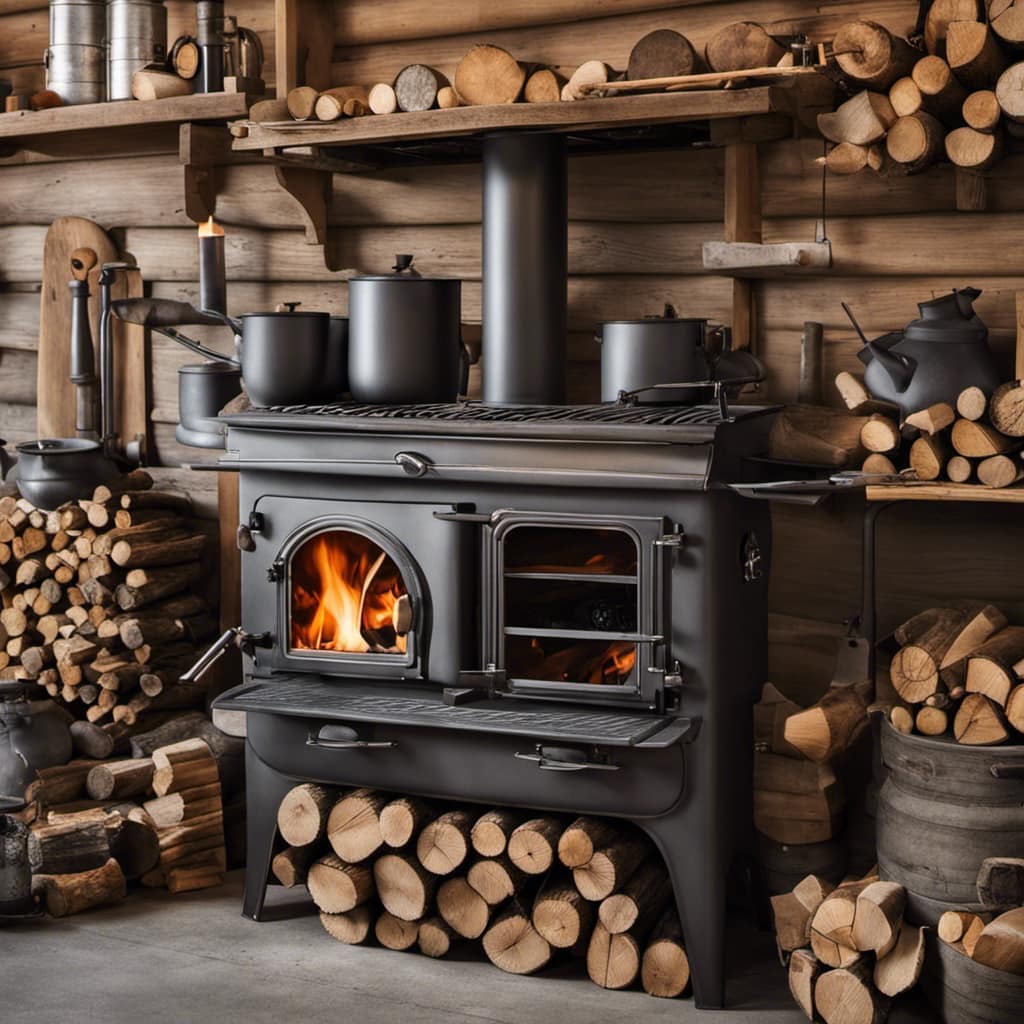
Utilizing Heat Transfer Methods
One way to make the most of my wood stove’s warmth is by using heat transfer methods. These techniques allow me to maximize heat distribution throughout my home, ensuring every room benefits from the cozy warmth. Here are four effective heat transfer techniques that I’ve found helpful:
-
Convection: As hot air rises, it creates a natural circulation that carries warmth throughout the space. By placing a heat-powered fan on top of the wood stove, I can enhance convection and distribute heat more efficiently.
-
Radiation: Installing a heat reflector or shield behind the stove helps to direct radiating heat towards the room, preventing it from being absorbed by the wall. This method ensures that more heat is radiated into the living area.
-
Conduction: Placing heat-resistant tiles or a heat-absorbing material, such as soapstone or cast iron, on the stove’s surface allows for better conduction of heat. These materials help to evenly distribute the warmth and prevent hotspots.
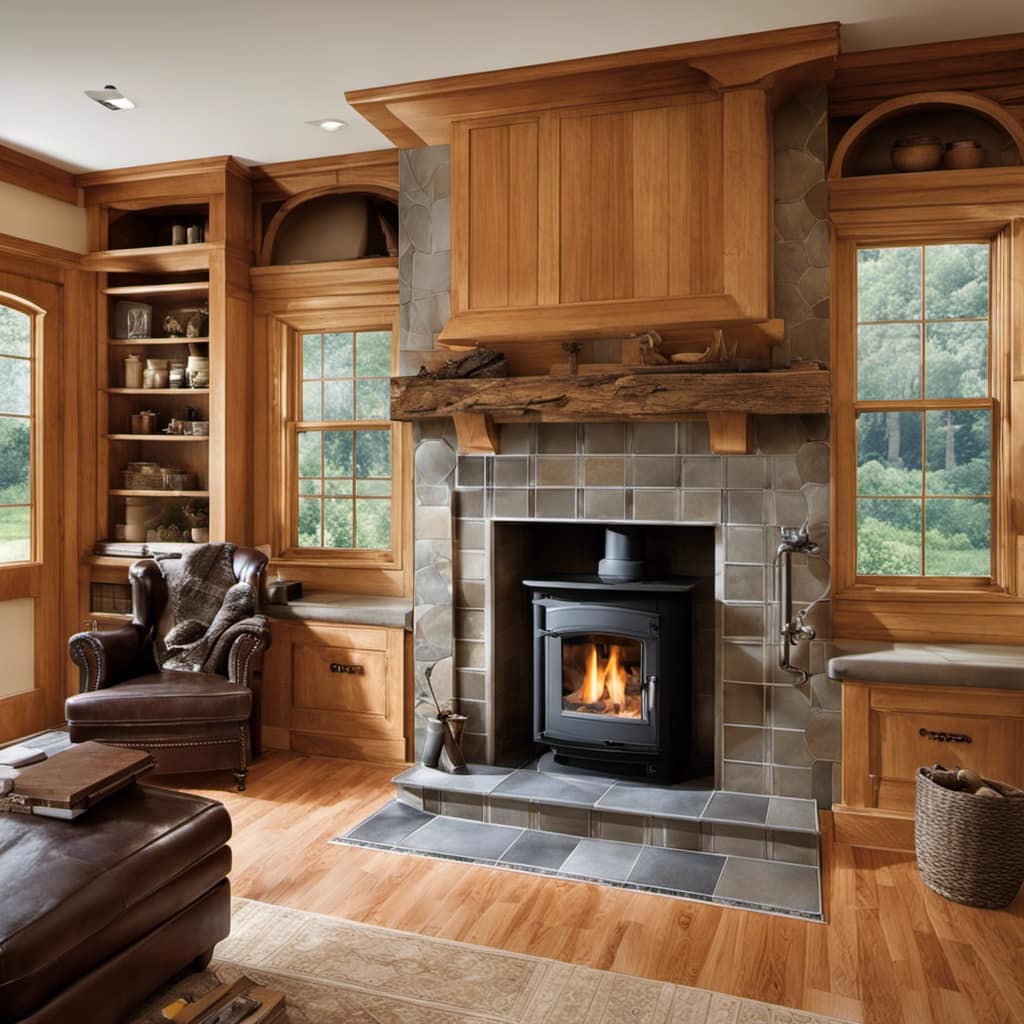
-
Forced Air: By using a duct system connected to the wood stove, I can distribute heat to different areas of the house. A blower or fan can be added to push the warm air through the ducts, maximizing heat distribution.
Optimizing Airflow in Your Space
To maximize the efficiency of my heating system, I ensure that the airflow in my space is optimized. By controlling the temperature and airflow, I can distribute heat from my wood stove more effectively.
One way to achieve this is by using a combination of natural and mechanical ventilation. Natural ventilation involves opening windows or doors to allow fresh air to enter the space, while mechanical ventilation utilizes fans or blowers to circulate air.
Additionally, I make sure to keep furniture and other objects away from vents or radiators to prevent airflow obstruction. Regularly cleaning and maintaining the heating system is also crucial for optimal airflow.
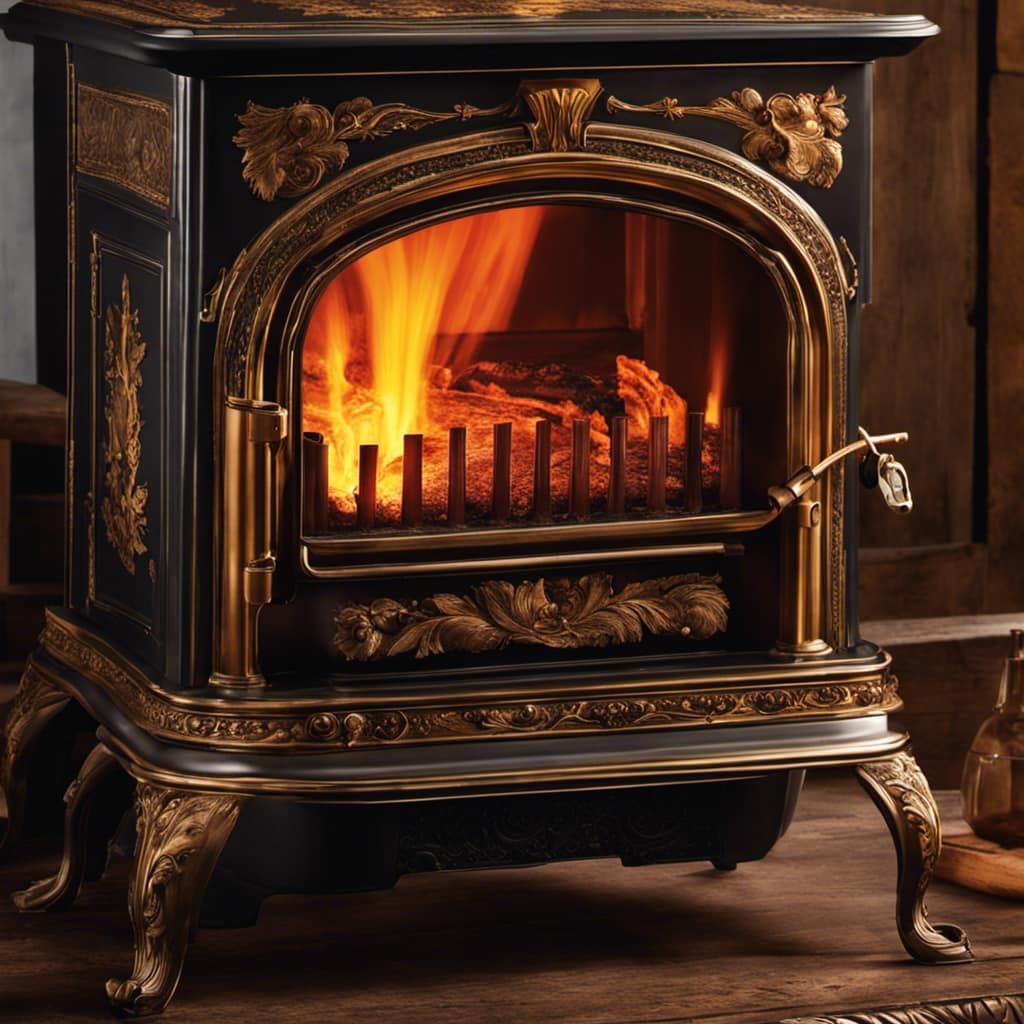
Implementing Heat Reflectors and Radiators
By using heat reflectors and radiators, I can enhance the effectiveness of my heating system. Here are four ways these heat distribution alternatives can maximize heat output:
-
Heat Reflectors: Placing heat reflectors behind the wood stove can help redirect heat into the room instead of being absorbed by the wall. These reflective surfaces bounce the heat back into the space, ensuring maximum heat distribution.
-
Radiators: Installing radiators near the wood stove allows for efficient heat transfer. These devices use convection to circulate hot air, providing a steady and even distribution of warmth throughout the room.
-
Heat Sinks: Utilizing heat sinks, such as ceramic tiles or stone slabs, near the stove can absorb and slowly release heat, maintaining a consistent and comfortable temperature in the room even after the fire has died down.
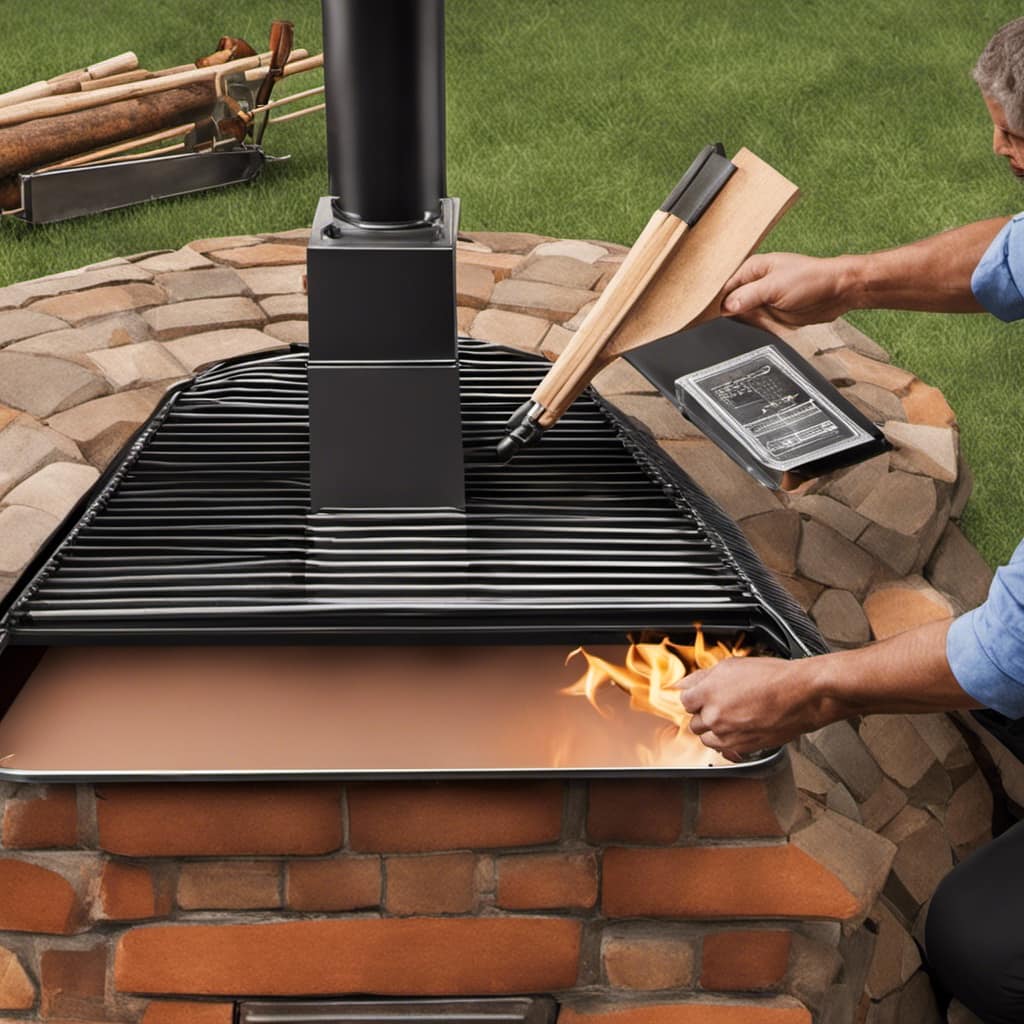
-
Forced Air Systems: Connecting the wood stove to a forced air system allows for the distribution of warm air to multiple rooms. This method increases the overall efficiency of the heating system, ensuring that no heat is wasted.
Exploring Additional Heat Distribution Techniques
Using heat reflectors and radiators has greatly improved the efficiency of my heating system.
However, I wanted to explore additional heat distribution techniques to further maximize the heat output.
One technique I implemented was the use of ceiling fans. By reversing the direction of the fan blades, the warm air that rises to the ceiling is pushed back down into the room, distributing the heat more evenly.
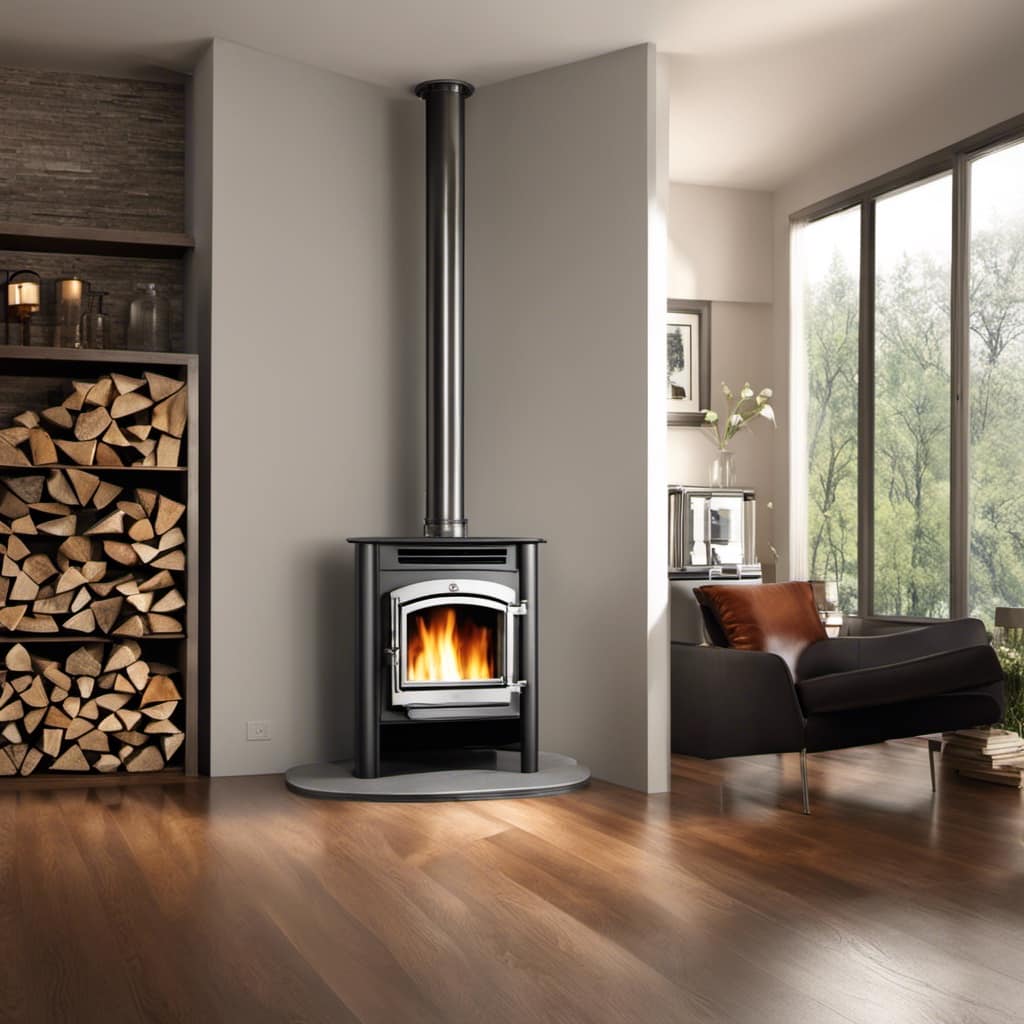
Another technique I tried was installing a heat recovery ventilation system. This system captures the heat from outgoing air and transfers it to incoming fresh air, ensuring that no heat is wasted.
Lastly, I also adjusted the damper settings on my wood stove to control the airflow and optimize heat distribution.
These additional heat distribution techniques have significantly improved the overall efficiency and effectiveness of my heating system.
Frequently Asked Questions
How Often Should I Clean My Wood Stove to Ensure Proper Heat Distribution?
I clean my wood stove regularly to ensure proper heat distribution. Cleaning frequency depends on usage, but I recommend cleaning it at least once a year. Proper maintenance is crucial for optimal heat distribution.

Can I Use a Wood Stove Fan to Improve Heat Circulation in My Space?
Yes, a wood stove fan can improve heat circulation in your space. It increases the efficiency of your wood stove by distributing the heat more evenly and effectively. The benefits of using a wood stove fan include faster heating and lower energy costs.
Are There Any Safety Measures I Should Take When Using Heat Reflectors or Radiators?
Safety precautions should be taken when using heat reflectors or radiators to distribute heat from a wood stove. It is important to ensure proper installation, maintain clearances, and monitor for any potential fire hazards.
Can I Install a Heat Distribution System That Is Compatible With My Existing HVAC System?
Yes, I can install a heat distribution system that is compatible with my existing HVAC system. By installing heat distribution, I can ensure even heat distribution throughout my home, maximizing the benefits of my wood stove.
Are There Any Alternative Methods to Distribute Heat From a Wood Stove That Are More Energy-Efficient?
There are energy-efficient alternatives to distribute heat from a wood stove. One option is using heat pumps. They have pros and cons, but they can effectively distribute heat throughout a space.
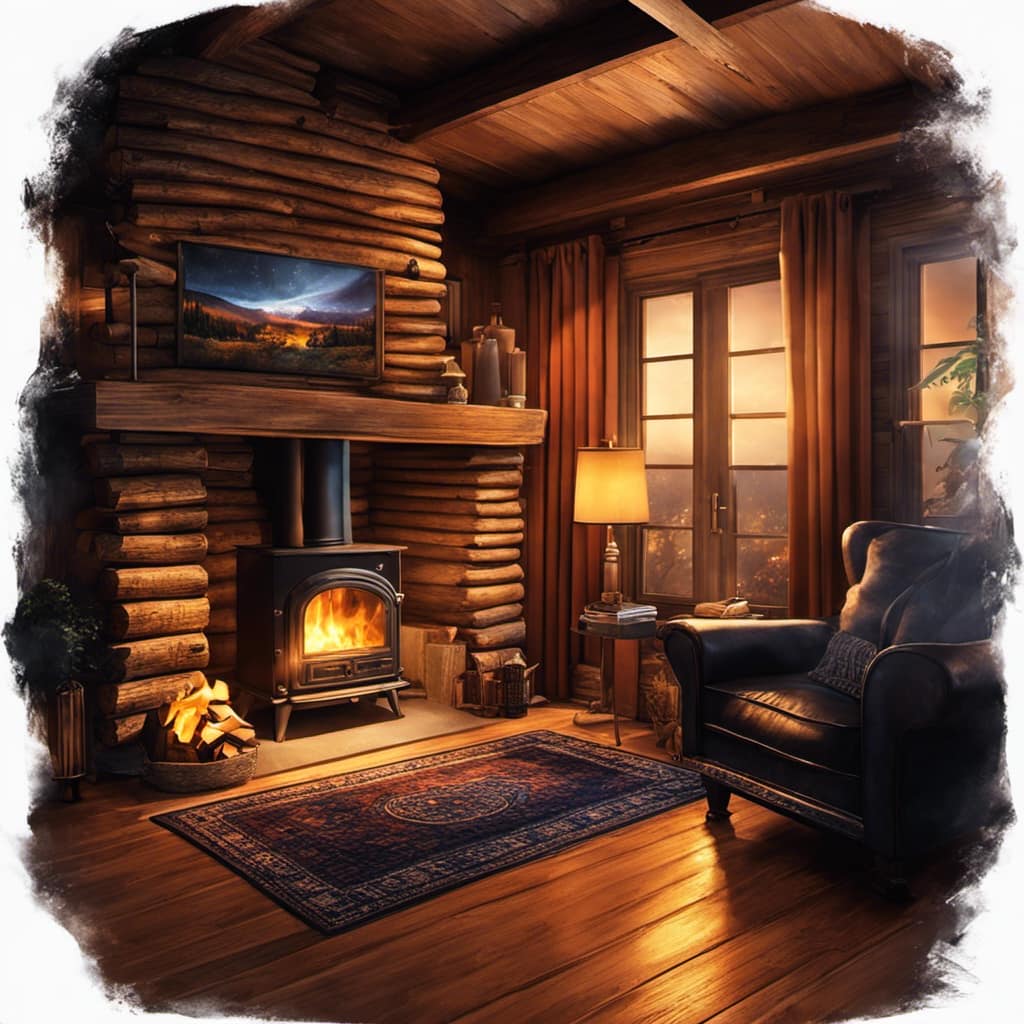
Conclusion
As the warmth from the wood stove envelops the room, it’s like a gentle embrace from a loving friend. The art of distributing heat efficiently isn’t just about staying warm, but creating a harmonious atmosphere.
By understanding heat circulation, utilizing transfer methods, optimizing airflow, and implementing reflectors and radiators, you can transform your space into a cozy haven.
So, let the wood stove be your ally in the battle against cold, and bask in the comforting radiance it provides.
Growing up surrounded by the vast beauty of nature, Sierra was always drawn to the call of the wild. While others sought the comfort of the familiar, she ventured out, embracing the unpredictable and finding stories in the heartbeat of nature.
At the epicenter of every remarkable venture lies a dynamic team—a fusion of diverse talents, visions, and passions. The essence of Best Small Wood Stoves is crafted and refined by such a trio: Sierra, Logan, and Terra. Their collective expertise has transformed the platform into a leading authority on small wood stoves, radiating warmth and knowledge in equal measure.











